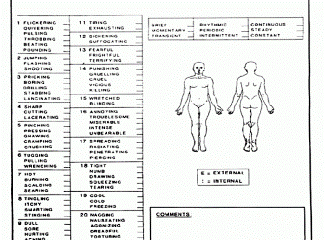2009 INDUCTEE Ronald Melzack, PhD Brain & Mind, Evidence-based Medicine & Clinical Trials, Leadership in Organizational Development
July 19, 1929
(Montreal, Québec)
December 22, 2019
MSc, McGill University (1951)
PhD, McGill University (1954)
2010: Grawemeyer Award
2004: Honorary LDD, Dalhousie University
See All AwardsAwards & Honours:
2010: Grawemeyer Award
2004: Honorary LDD, Dalhousie University
2001: Killam Prize
2000: Officer of the Ordre National du Québec
1995: Officer of the Order of Canada
1994: Prix du Québec for research in pure and applied science
1992: Honorary DLitt, University of Waterloo
1982: Fellow of the Royal Society of Canada

Revolutionized understanding of pain and set the global standard for pain measurement.

A giant in the field of pain research
A leader and visionary, Dr. Ronald Melzack made major contributions in the field of pain research. Most notable among them was his development of the gate-control theory of pain in collaboration with neurophysiologist Dr. Patrick Wall. This theory produced an explosive growth of research and resulted in experimental and clinical psychology becoming an integral part of pain research and therapy. In 1968, Dr. Melzack published an extension of the gate-control theory, proposing that pain is a subjective, multidimensional experience subserved by parallel neural networks. Dr. Melzack also co-founded a world-leading centre for pain research, developed the gold standard of pain measurement and published a neuromatrix theory of pain.
Key Facts
The original paper that proposed Gate Control Theory of Pain has become one of the most cited neuroscience articles of all time
Authored The Puzzle of Pain and co-authored “The Challenge of Pain,” which have both been reprinted and translated into several languages
Edited or co-edited several textbooks including “Pain Measurement and Assessment,” “Textbook of Pain,” “Handbook of Pain Assessment” and “Handbook of Pain Management”
Founding member of the International Association for the Study of Pain
Was a fellow of the American Psychological Association, Canadian Psychological Association and American Association for the Advancement of Science
His McGill Pain Questionnaire has been translated into 57 languages
Professional timeline
Impact on lives today
Before Drs. Melzack and Wall proposed their groundbreaking theory of pain, few researchers were interested in the field of pain research. Dr. Melzack’s career resulted in a new era of research that eventually led pain to become one of the major fields in neuropsychology. Moreover, his success in building Canadian institutional strength in pain research continues to support the training of the world’s next generation of leading researchers, including Noble Prize Laureate John O’Keefe. In addition to his legacy of scientific research, Dr. Melzack’s impact continues to be felt by the countless patients that benefit from the clinical innovations born of the Gate Control Theory of Pain.

2010
-
The IASP Council established the Ronald Melzack Lecture Award
The award honours the profound impact of Dr. Melzack on the study of pain.
-

Ronald Melzack inducted into the Canadian Medical Hall of Fame
Montreal, Québec
-
Dr. Melzack’s fascination with phantom limb pain led to a publication in 1989 of the “neuromatrix theory of pain”
Brain & MindHe proposed that we are born with a genetically determined neural network that generates the perception of the body, the sense of self, and can also generate chronic pain, even when no limbs are present.
-

Dr. Ronald Melzack developed the McGill Pain Questionnaire
Evidence-based Medicine & Clinical TrialsIt is the most widely used method of measuring pain in clinical research worldwide.
-
Dr. Melzack, along with Dr. Joseph Stratford, co-founded the first pain clinic in Canada at McGill.
Diagnosis, Treatment and Prevention, Leadership in Organizational DevelopmentDr. Melzack served as the Research Director from 1974 to 2000. The clinic has become known as the McGill-Montreal General Hospital Pain Centre and has grown to be one of the best organized centres for pain treatment in the world.
-
Along with Dr. Patrick Wall, Dr. Ronald Melzack proposed the Gate Control Theory of Pain
Brain & MindThis theory proposed that pain was not felt at the patient’s point of injury but, rather, in their brain from a pathway that travels through the spine. This discovery led to the use of meditation and distraction to decrease feelings of pain.
-

Dr. Melzack returned to McGill University
After post-doctoral experience at the University of London and MIT, Dr. Melzack chose to return to Canada and, in particular, his alma mater.
1963
What Einstein did for physics, he has done for pain research and management.
Additional Resources:
- The golden anniversary of Melzack and Wall’s gate control theory of pain: Celebrating 50 years of pain research and management
- Ronald Melzack: Pain Pioneer
- Stories by Ronald Melzack
- CMHF Laureate biography - Ronald Melzack


